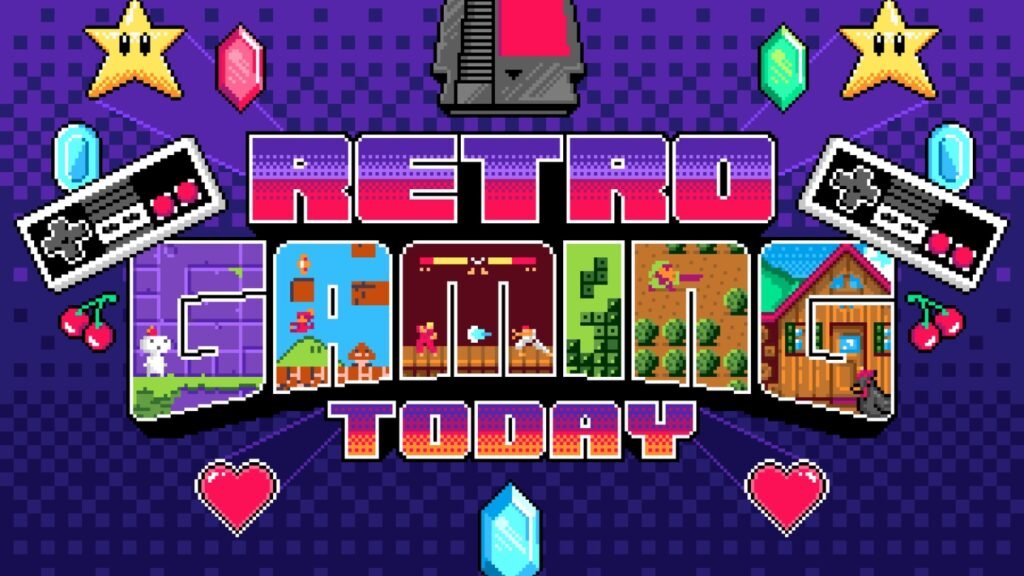In today’s fast-paced digital world, where ultra-realistic graphics and immersive virtual reality experiences dominate, the charm of a retro game might seem outdated to some. Yet, retro games continue to captivate a large and passionate audience across America. From pixelated 8-bit adventures to the simple joy of classic arcade cabinets, these games offer more than just nostalgia—they represent a unique blend of simplicity, challenge, and cultural significance. Whether you’re a millennial reliving childhood memories or a Gen Z gamer discovering the roots of the medium, retro games have a timeless appeal that goes beyond mere entertainment.
What Defines a Retro Game?
A retro game is typically defined as a video game from an earlier generation, often from the 1970s through the 1990s. These games usually feature simple graphics, straightforward gameplay mechanics, and iconic soundtracks. Unlike many modern games that focus on hyper-realism and complex storylines, retro games emphasize fun, skill, and creativity within limitations. The pixelated visuals and chiptune music, often dismissed by some as outdated, have become emblematic of a golden era in gaming history.
This era introduced iconic franchises such as Super Mario Bros., The Legend of Zelda, and Pac-Man. These games laid the foundation for modern gaming and continue to influence new generations of developers. As Professor Jane McGonigal, a renowned game designer, states,
“Retro games remind us of the pure joy of play, stripped down to its essentials, before gaming became a multibillion-dollar industry.”
The Cultural and Emotional Impact of Retro Games
One of the strongest reasons why retro games remain relevant is nostalgia. Many American players grew up with these games, and revisiting them rekindles memories of simpler times. The emotional connection goes beyond the screen; it’s about shared experiences with friends and family, collecting physical cartridges, and the thrill of beating a tough level without modern conveniences like save states or walkthroughs.
Moreover, retro gaming has cultivated vibrant communities both online and offline. Fans gather to discuss gameplay strategies, trade vintage consoles, and even develop fan-made remakes. Events like retro gaming conventions and tournaments highlight how deeply these games resonate across generations, fostering a sense of belonging among enthusiasts.
The Artistic and Design Legacy
Beyond nostalgia, retro games are studied academically for their design ingenuity. The limitations of early hardware forced developers to innovate creatively. According to a 2018 study published in the Journal of Gaming & Virtual Worlds, retro games offer insights into minimalist game design principles that remain relevant today. The study highlights how constraints fostered memorable mechanics and storytelling that modern games can learn from.
From a visual arts perspective, pixel art—a hallmark of retro games—has experienced a resurgence. This style is appreciated not only for its aesthetic but also as a medium for storytelling in indie games today. By embracing the retro aesthetic, contemporary games pay homage to their roots while appealing to audiences seeking authentic and straightforward gameplay.
Retro Games and Modern Technology: A Symbiotic Relationship
Thanks to advances in technology, retro games are more accessible than ever. Emulation software allows players to experience classic games on modern devices, preserving the original gameplay while adding conveniences like save states and improved graphics. This has broadened the appeal of retro games, making them available to a younger audience that never owned the original hardware.
Additionally, many classic titles have been re-released on modern platforms such as the Nintendo Switch, PlayStation, and Xbox. These remastered versions often include enhanced graphics, additional content, and online multiplayer features, blending the old with the new. This fusion of retro and modern technology helps sustain the genre’s popularity while introducing it to new generations.
Indie Game Developers and Retro Inspiration
Interestingly, retro games heavily influence the indie game scene in America. Developers often draw inspiration from the pixel art style and gameplay mechanics of retro classics, resulting in titles that feel familiar yet fresh. Games like Shovel Knight and Celeste demonstrate how retro aesthetics combined with modern design can create critically acclaimed and commercially successful experiences.
This trend underscores how retro gaming is not just about looking back but also about pushing the medium forward by revisiting foundational concepts. As gaming scholar Dr. Emma Westbury notes in her analysis on game evolution,
“The revival of retro game elements in indie titles bridges past and present, creating a dialogue that enriches gaming culture.”
Challenges and Criticisms of Retro Gaming
While retro games offer many benefits, some critics argue that nostalgia can overshadow the flaws of older titles. Early games sometimes featured frustrating difficulty spikes, limited narrative depth, or technical limitations that modern players might find off-putting. It’s essential to appreciate retro games with a critical eye, recognizing both their innovation and their shortcomings.
Preservation and Legal Issues
Preserving retro games is another challenge. Many classic titles and hardware are becoming rare, and digital preservation efforts face legal hurdles related to copyright and licensing. Organizations dedicated to video game history emphasize the importance of archiving and making these games available for future generations while respecting intellectual property rights.
Conclusion: The Future of Retro Games in American Gaming Culture
In conclusion, the world of retro games continues to thrive because it offers something uniquely valuable: a connection to the past, a test of skill, and an artistic foundation that modern games build upon. For American gamers, retro games are more than just old software; they are cultural artifacts that evoke emotion, inspire creativity, and foster community.
As technology evolves and the gaming industry grows, retro games maintain a crucial role in reminding us where it all began. Their influence on game design, storytelling, and artistic style ensures that they will not only endure but continue to inspire future generations of gamers and developers alike. Embracing retro games means honoring the legacy of the medium while celebrating the joy of play in its purest form.
Would you like me to help you practice speaking using this blog? We could go through advanced vocabulary, idioms, and expressions embedded in the text!
